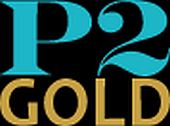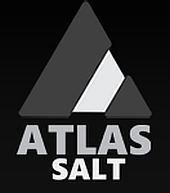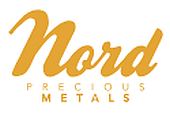 Kivalliq Drills New ML Zone in Lac 50 Trend; Update on Phase 1 Exploration at Angilak Property
Kivalliq Drills New ML Zone in Lac 50 Trend; Update on Phase 1 Exploration at Angilak Property
“The ML Zone is Kivalliq’s second drilling discovery this season; and the 12th such discovery within the highly prospective Lac 50 Trend since 2010. Our exploration targeting techniques continue to generate positive and meaningful results,” stated Jim Paterson, Kivalliq’s CEO. “As in the past two years, work in Phase 1 has identified zones for follow up. We will now focus on activities with the potential to impact a preliminary economic assessment (“PEA”) of the Lac 50 Trend.”
Exploration highlights in 2013 to date include:
- Two new uranium discoveries from drilling of the Lac 50 Trend – ML Zone and J1 Zone
- ML Zone – Hole 13-ML-001 intersected anomalous radioactivity up to 30,000 counts per second (“cps”) over 1.3 metres true width, 300 metres west of an anomalous reverse circulation (“RC”) hole drilled in 2012
- J1 Zone – Six of six holes drilled intersected anomalous radioactivity 800 metres west of the J4 zone
- 995 line kilometres of geophysical surveying prioritized targets within the Lac 50 Trend and property-wide
ML Zone Discovery
The ML Zone conductor was identified as a priority target in 2012 when a single RC hole at the end of the season intersected host rocks and mineralization similar to that in the Lac 50 Trend, with anomalous radioactivity between 200 and 1600 cps over 1.5 metres. In April 2013, four core holes totaling 632 metres tested this 1.5 kilometre long conductor from two sites 1.1 kilometres apart.
Holes 13-ML-001 and 002 tested the ML Zone conductor 300 metres west of the 2012 RC hole. 13-ML-001 intersected anomalous radioactivity with values between 200 and 30,000 cps over a true width of 1.3 metres at 60 metres vertical depth. Mineralization occurs within a 4.3 metre wide zone of sheared, hematized, sulphidic graphitic tuff and carbonate veining. Hole 13-ML-002 intersected the same altered tuff unit 36 metres down dip, but with no radioactivity. Holes 13-ML-003 and 004 tested the ML conductor 1.1 kilometres along strike to the east, intersecting a similar sheared tuffaceous host rock with no radioactivity. Closer spaced drilling is warranted on this mineralized structure.
All holes in target areas were drilled northeast with azimuths 26 degrees at inclinations between -45 and -67 degrees. For maps and drill plan images, please visit:http://www.kivalliqenergy.com/projects/angilak/program_images/
Phase 1 Exploration Program
As part of the Phase 1 program, Kivalliq drilled 2,100 metres of NQ core in 14 holes using one drill rig. Three priority targets were tested within the Lac 50 Trend, two new zones discovered (J1 and ML) and a single hole was drilled at the VGR1 anomaly on the west side of the Angilak Property.
In addition to five holes reported for the J1 Zone (news release dated April 17, 2013) a sixth hole testing this anomaly encountered weak radioactivity (1400 cps) over 0.2 metres. Two holes drilled on ice, 13-J1-007 and 13-J4W-001, investigated lake based targets located approximately 500 metres west of J1. These holes intersected fault breccia with no radioactivity.
A single vertical hole tested the VGR1 geophysical anomaly approximately 25 kilometres west of the Lac 50 Trend. Drilling was completed to a depth of 412 metres without reaching the target unconformity between Proterozoic basin and Archean basement rocks, and an initial hole was lost due to poor drilling conditions. No elevated radioactivity was noted in the sequence of carbonate veined trachyte and maroon-red sandstone before the hole ended in horizontal bedded sandstone. Geophysical anomalies at VGR1 and on lakes in the Lac 50 Trend were not explained by drilling and further work is warranted.
Pending assay results and subject to capital market conditions, Kivalliq will continue the second phase of the proposed 2013 Exploration Program at Angilak, announced February 5 and revised on April 2, 2013.
QA/QC
Half-spilt core samples from holes drilled at the Angilak Property, with anomalous radioactivity levels between 130 and 30,000 cps measured to date, will be sent to Saskatchewan Research Council Geoanalytical Laboratories (“SRC”) for analysis. The SRC facility operates in accordance with ISO/IEC 17025:2005 (CAN-P-4E), General Requirements for the Competence of Mineral Testing and Calibration laboratories and is accredited by the Standards Council of Canada. Kivalliq’s quality assurance and quality control procedures include the systematic insertion of blanks and standards into the drill core sample string. Chemical assay results from this drill program will be reported by Kivalliq upon receipt.
Natural gamma radiation in drill core was measured in counts per second using a hand-held Radiation Solutions Inc. RS-121 scintillometer or RS-230 spectrometer. Kivalliq cautions that scintillometer readings are not directly related to uranium grade and are only used to indicate zones of radioactive material.
Jeff Ward, P.Geo, President of Kivalliq and a Qualified Person for Kivalliq, has reviewed and approved the scientific and technical information contained in this release. For disclosure related to the inferred resource for the Lac 50 Trend uranium deposit, please refer to Kivalliq’s news release of March 1, 2013.
http://www.kivalliqenergy.com/news/
































